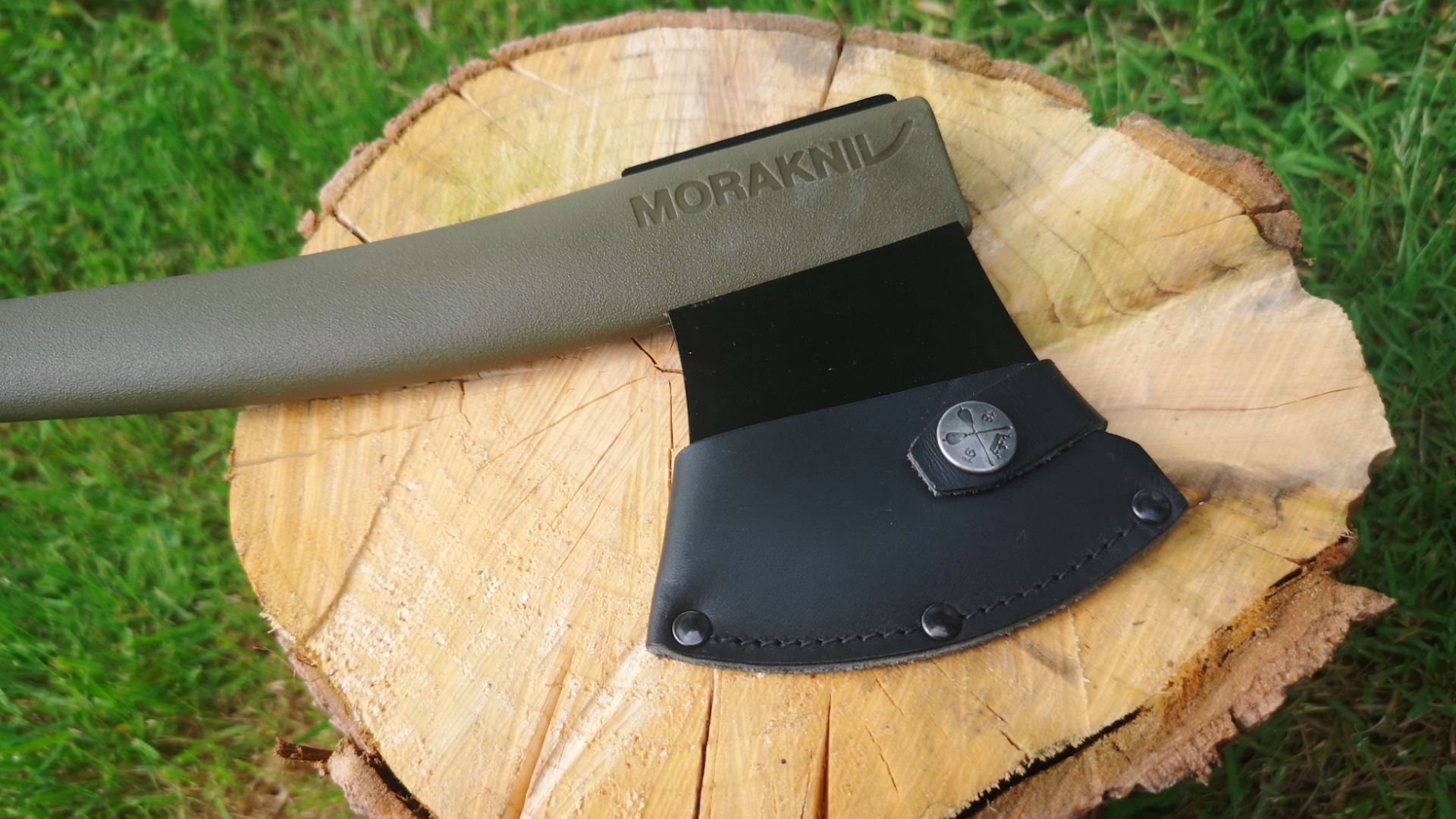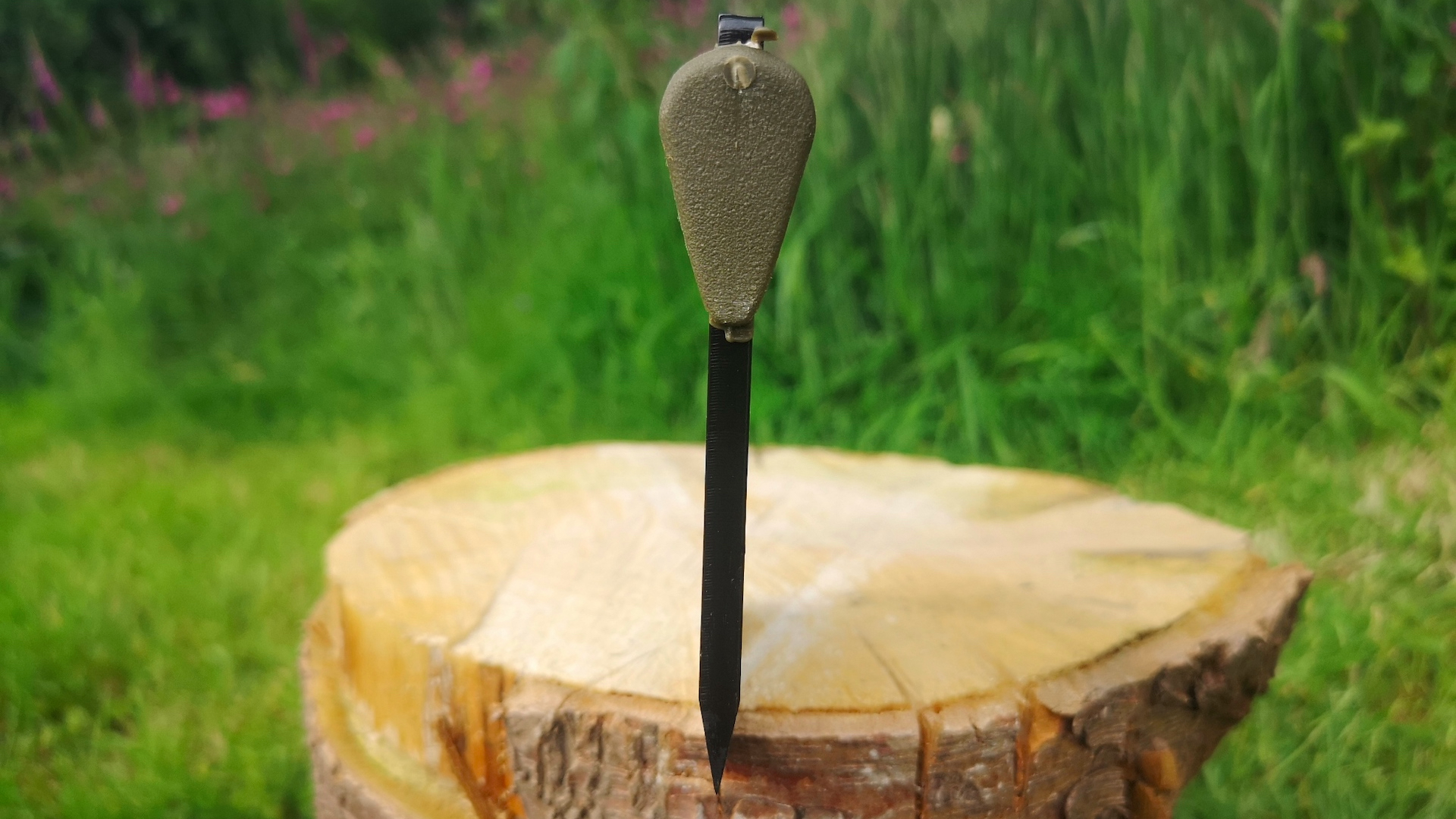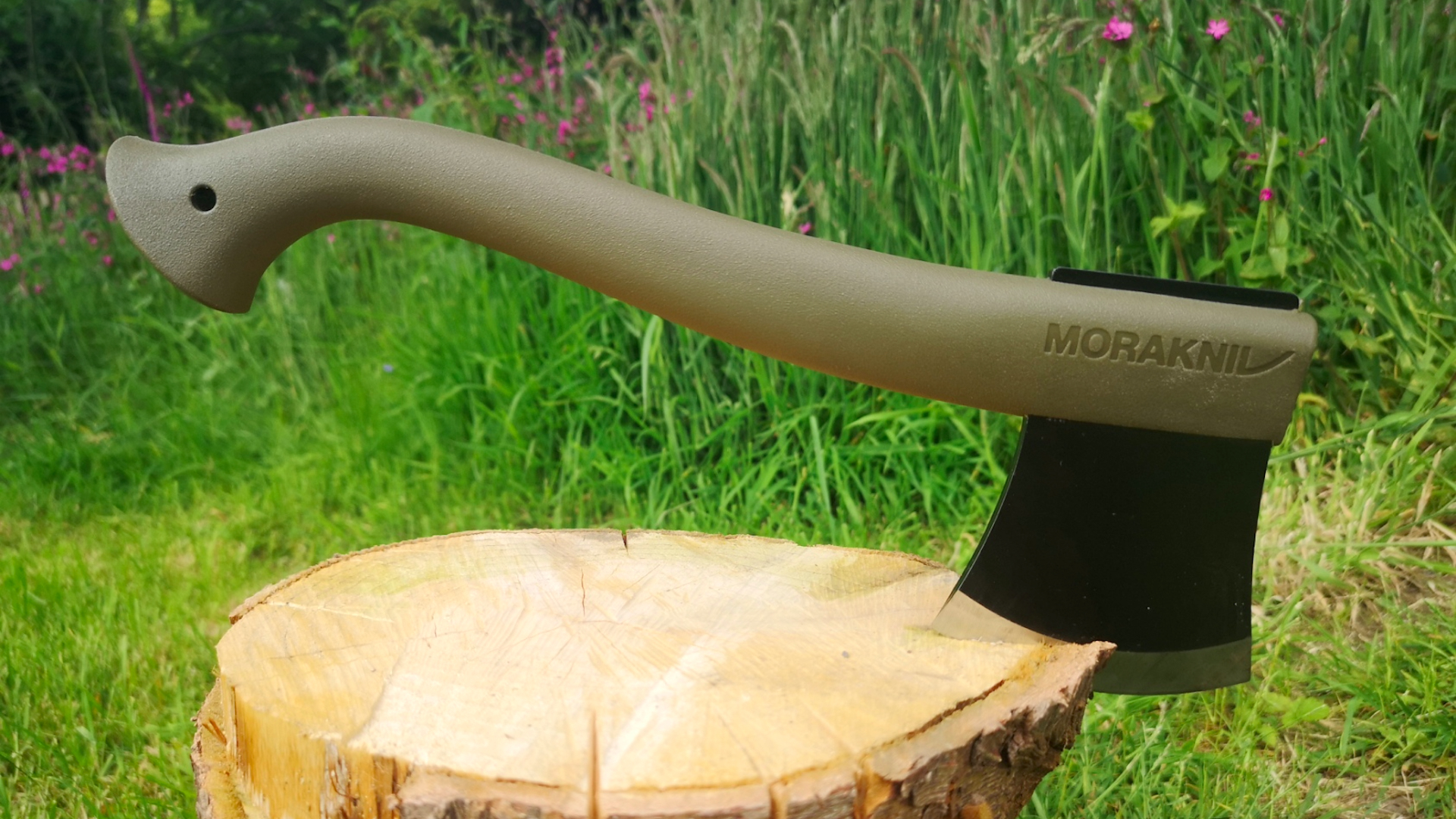Advnture Verdict
Despite its diminutive size, this little hatchet has decent head weight. Combined with the hardened steel blade and unusual but effective shape of the handle, this gives the Mora Lightweight Axe surprising cutting power. It’ll chop kindling easily and even split small logs up to about 4.5in in thickness. It’s also a light and compact tool, making it well-suited to backcountry and backpacking trips.
Pros
- +
Light and compact
- +
Supplied with leather edge guard
- +
Hardened steel head
- +
Rust-resistant coating
Cons
- -
Plastic handle scuffs easily
- -
Small, thin poll of limited use for hammering tent stakes or similar
You can trust Advnture
Mora Lightweight Axe: first impressions
The Mora Lightweight Axe comes from a long-established Swedish tool brand best known for its inexpensive yet very capable knives, frequently used by hunters, campers and bushcrafters. But Mora also produce a compact camp hatchet, somewhat counter-intuitively called the “Lightweight Axe”. It’s quite an unusual-looking beast, with a 6mm thick, black-coated steel head slotted into a polypropylene handle, which comes in two colors – muted forest green or high-viz orange.
This hatchet tips the scales at around half a kilo, or just over a pound, and its overall length is just over 12 inches. So, it’s a very compact tool that slides easily into even a small pack. It’s also light enough to be a viable option to take on backcountry camping trips or backpacking adventures, even those that might involve lugging everything in on foot.
Despite its diminutive size, the Mora has decent head weight, especially compared to other compact hatchets we tested for our Best camping axe buying guide, such as the SOG Camp Axe or the Whitby Outdoor Axe. It’s also made from high-quality boron steel, which is slightly harder and stronger than most standard carbon steels, and keeps an edge better.

It’s finished with a black ED-coating to protect from rust and is also supplied with a good quality edge protector made from vegetable-tanned leather. This is stitched and riveted, fastening with a simple press stud. Though it doesn’t protect the whole head, it ought to enable you to keep this hatchet in your best hiking backpack without you worrying about it damaging the rest of your camping kit. It’s certainly a step up from the simple plastic or nylon sheaths that are usually supplied with budget axes and hatchets.
The bit has plenty of belly for its size, and a double bevel reminiscent of the Scandinavian grind that characterizes a lot of Mora’s bushcraft-oriented knives. This only gives you about half an inch of cutting surface, though, since the flat steel head lacks the wedge-shaped profile of most small axes.
The handle is made from textured polypropylene, which offers good grip, aided by an oversized, turned-in palm swell that sits comfortably in one hand. It’s finished with a useful lanyard hole. The handle’s ergonomic, teardrop-shaped profile also ensures it’s easy to choke up near the head for finer work. It might lack the warmth and tactility of a wood handle, but it’s undeniably practical.
• RRP: $60 (US) / £50 (UK)
• Weight: 495g / 17.5oz
• Blade length: 9cm / 3.5in
• Overall length: 32cm / 12.5in
• Head: Boron steel (black ED coated)
• Handle: Reinforced polypropylene
• Head guard: Black vegetable-tanned leather
Mora Lightweight Axe: in the field

Initially, we weren’t sure whether we’d get on with this unusual-looking hatchet, but it surprised us not only with its capabilities but also its comfort in use. The curved handle and nicely weighted head give you plenty of downforce when chopping, ensuring it makes light work of cutting kindling and even splitting small logs. The textured plastic handle offers good grip too, aided by that pronounced palm swell, which feels comfortable and secure. The similarly unusual, bevelled bit ensures finer cutting tasks – like shaving bark or whittling feather sticks for tinder – are easy too. So, for light camp tasks, the Mora is a winner.
It's best used for that kind of stuff only, though – this isn’t a great hatchet for clearing trails, snedding branches or limbing logs so that you can build a natural shelter. It’s too light and too short to be of much use in this capacity, and here the unusual shape of the handle just feels awkward.
The thin, flat head also means there’s not much in the way of a poll, butt or hammer at the back of the head, so this hatchet is of limited use if you like to use the weight of an axe to hammer in tent pegs or similar, unless you’re extremely confident in the precision of your striking.

We also noticed that although this hatchet works well for splitting small logs, over time this does tend to scuff the plastic handle, where it meets the head. This is where a traditional one-piece steel head with a wedge profile would work better.
On the other hand, that would change the design of this hatchet altogether, adding weight and bulk. And the major advantages of the Mora are that it is light and compact enough to take on many trips where a bigger axe would be impractical. And unlike many other miniature hatchets, the Mora is a genuinely useful, well-designed tool. The hardened boron steel head comes sharp straight out of the box and retains its edge remarkably well.
The handle is decent too – despite being made from plastic, it’s strong, sturdy and seems reasonably durable, while also being nicely shaped and textured. Our test sample did have some molding and flashing marks, but we can forgive that. All in all, we were impressed with how this little axe performed on camp, and it would be our pick of the bunch amongst the three lightest and most compact hatchets we tested.
An outdoors writer and editor, Matt Jones has been testing kit in the field for nearly a decade. Having worked for both the Ramblers and the Scouts, he knows one or two things about walking and camping, and loves all things adventure, particularly long-distance backpacking, wild camping and climbing mountains – especially in Wales. He’s based in Snowdonia and last year thru-hiked the Cambrian Way, which runs for 298 miles from Cardiff to Conwy, with a total ascent of 73,700 feet – that’s nearly 2½ times the height of Everest. Follow Matt on Instagram and Twitter.


